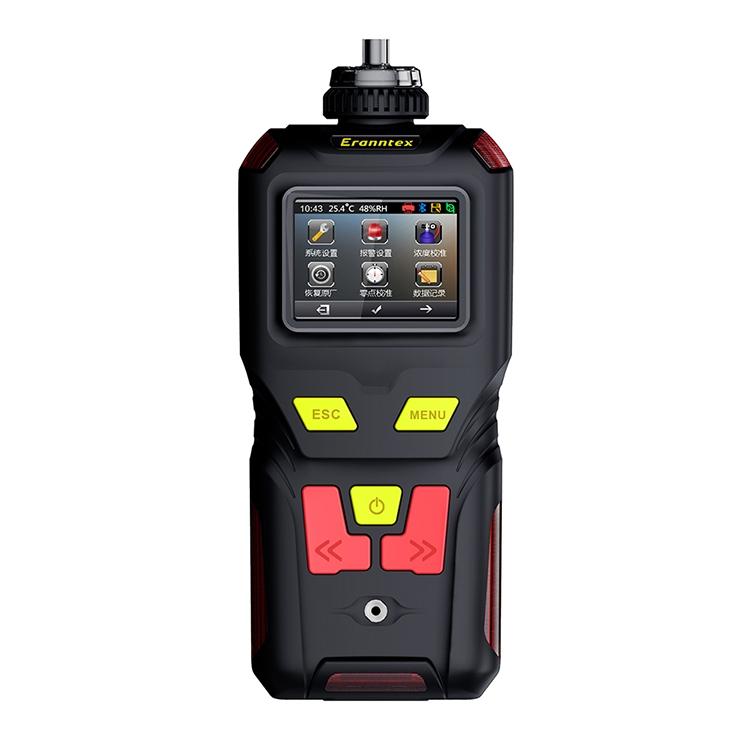- English
- Español
- Português
- русский
- Français
- 日本語
- Deutsch
- tiếng Việt
- Italiano
- Nederlands
- ภาษาไทย
- Polski
- 한국어
- Svenska
- magyar
- Malay
- বাংলা ভাষার
- Dansk
- Suomi
- हिन्दी
- Pilipino
- Türkçe
- Gaeilge
- العربية
- Indonesia
- Norsk
- تمل
- český
- ελληνικά
- український
- Javanese
- فارسی
- தமிழ்
- తెలుగు
- नेपाली
- Burmese
- български
- ລາວ
- Latine
- Қазақша
- Euskal
- Azərbaycan
- Slovenský jazyk
- Македонски
- Lietuvos
- Eesti Keel
- Română
- Slovenski
- मराठी
- Srpski језик
Can the four-in-one detector be used for operations in confined spaces?
2025-04-24
In confined space operations, safety is always the top priority. Since there may be various harmful gases in confined spaces, such as insufficient oxygen, flammable gas leakage, accumulation of toxic gases such as carbon monoxide or hydrogen sulfide, these pose a serious threat to the life safety of operators. Therefore, it is particularly important to use efficient and reliable gas detection tools. The four-in-one detector, as a portable device that integrates multiple gas detection functions, is gradually becoming an indispensable safety guarantee equipment in confined space operations. In this article, Zetron Technology will introduce in detail the safe use specifications of the four-in-one detector in confined space operations to ensure the life safety of operators.

The following is a detailed explanation of the safe use specifications of the four-in-one detector in confined space operations:
I. Procurement and selection
Equipment type: When purchasing a detector, you should choose a pump-type gas detector or a composite diffusion gas detector. The single diffusion gas detector can only detect one gas because it has a single built-in sensor and is not suitable for confined space operations.
Detection gas: The common four-in-one configuration is oxygen, combustible gas, carbon monoxide and hydrogen sulfide. According to the type of gas that may exist in the confined space, the corresponding sensor configuration can be selected.
II. Inspection before use
Verification and calibration: The gas detector should be within the validity period of verification/calibration, and obtain the corresponding verification certificate or be confirmed as qualified by calibration. The verification/calibration cycle shall not exceed 12 months.
Equipment status: Check whether the battery is sufficient and whether the appearance is clean and undamaged. The air inlet and sensor components should be unobstructed. The extended sampling tube and filter device should be correctly connected without leakage or blockage.
III. Power on and settings
Power on steps: Press and hold the power button for 3 seconds, the machine enters the system initialization, and displays the range value, alarm upper limit value, and alarm lower limit value of combustible gas, oxygen, hydrogen sulfide, and carbon monoxide respectively. After completing the self-test, the gas concentration value of the current environment is displayed.
System settings: Set the alarm value, date and time, standby time, record settings and other parameters as needed. The alarm value must be set accurately to avoid safety risks caused by incorrect settings.
IV. Detection and response
Detection environment: Before entering the confined space, the working environment should be tested for gas. Only after confirming that there are no safety hazards can the working surface be entered for testing.
Real-time detection: Place the probe in the environment to be tested. When there is a leak of the gas to be tested, the concentration display value becomes larger. When the alarm setting value is exceeded, the alarm indicator light is on and the alarm sounds at the same time.
Emergency treatment: When the detector alarms, the working surface should be evacuated immediately, and forced ventilation should be carried out for more than half an hour before testing.
V. Shutdown and storage
Shutdown steps: After use, the data should be returned to "zero point" in a clean environment before shutting down. Press and hold for 3 seconds to complete the shutdown.
Storage requirements: Keep the detector clean and place it in a dry, dust-free environment that meets the storage requirements.
VI. Other precautions
Staffing: When testing, the detection personnel should maintain more than two people, one person operating and the other monitoring. Keep a certain distance in front and behind, and single-person operation is strictly prohibited.
Equipment maintenance: Calibrate and maintain the detector regularly to ensure its accuracy and reliability. Avoid contact between the detector and lead compounds, etc., to avoid damaging the sensor.
Training and education: Gas detectors and operators working in confined spaces should be trained and qualified in the operation and use of the four-in-one gas detection alarm.
In summary, the four-in-one detector plays a vital role in confined space operations. By following the above safety use specifications, we can ensure the accuracy and reliability of the detector and provide operators with timely and effective gas concentration information, thereby avoiding potential safety risks. However, safety is no small matter. In addition to relying on advanced detection equipment, we should also continuously strengthen the safety awareness training of operators, improve the safety management system, and ensure that every confined space operation can be carried out in a safe and controllable environment. Only in this way can we truly protect the lives of operators and promote the safe and efficient operation of confined spaces.







